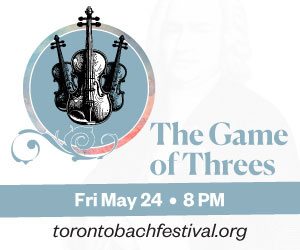Proliferation of CD burners, sequencing and editing software and the exponential growth of the Internet have opened up new possibilities for disseminating music. This is especially germane for improvised and other minority sounds. By avoiding the expenses of mass distribution and manufacturing music can reach more interested listeners. Formulae have been developed to do so and each of these fine sessions uses one.
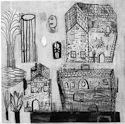 Rimouski, Quebec-based bassist/audio artist Éric Normand, who performs at Somewhere There this month, allows listeners to download sounds from his website www.tourdebras.com. One example of this is Une Règle de Trois (Tour de Bras tdbouebe002). A hand-drawn CD cover can be downloaded as well. Recorded live, this is a super-session of sorts featuring collaborations among improvisers from Rimouski, Montreal and Montpellier, France. Most of the sounds balance on steady crunches and crackles from three turntablists, with wiggling flanges and flying spiccato reprises from fiddler Catherine Massicotte and guitarist Christophe Devaux, plus puffs and bellows from Robin Servant’s diatonic accordion. Normand adds aleatoric and agitato smacks bringing the discursive theme in-and-out of aural focus, as the motor-driven clicks and clatters create a pedal point foundation.
Rimouski, Quebec-based bassist/audio artist Éric Normand, who performs at Somewhere There this month, allows listeners to download sounds from his website www.tourdebras.com. One example of this is Une Règle de Trois (Tour de Bras tdbouebe002). A hand-drawn CD cover can be downloaded as well. Recorded live, this is a super-session of sorts featuring collaborations among improvisers from Rimouski, Montreal and Montpellier, France. Most of the sounds balance on steady crunches and crackles from three turntablists, with wiggling flanges and flying spiccato reprises from fiddler Catherine Massicotte and guitarist Christophe Devaux, plus puffs and bellows from Robin Servant’s diatonic accordion. Normand adds aleatoric and agitato smacks bringing the discursive theme in-and-out of aural focus, as the motor-driven clicks and clatters create a pedal point foundation.
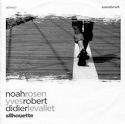 A more sophisticated version of downloadable CDs comes from the French Sans Bruit label. Featuring improvisers pianist Noah Rosen, trombonist Yves Robert and bassist Didier Levallet, Silhouette (Sans Bruit sbr007 www.sansbruit.fr) not only captures the trio live, but also provides a professionally designed front and back cover with recording details. Rosen and his confreres’ disc is as swinging as it is kinetic, highlighting an impressive admixture of timbres, not least of which includes modern gutbucket styling from trombonist Robert. Super staccato, Aesthetic Form for instance is less aesthetic than acrobatic, as Robert’s rubato whinnies slink and sway alongside Rosen’s two-handed pump in the piano’s lowest register, until he slips to the edge of the keys to link up with Levallet’s sul tasto runs. Elsewhere Rosen’s hunt-and-peck technique predominates, along with the trombonist’s triple-tonguing and mouth gymnastics. The session culminates with Bon, bref et puis… with allegro additions from each partner expressed in slaps and pumps from the bassist, cascading comping from the pianist plus foreshortened and jagged bass-pitched slurs from Robert.
A more sophisticated version of downloadable CDs comes from the French Sans Bruit label. Featuring improvisers pianist Noah Rosen, trombonist Yves Robert and bassist Didier Levallet, Silhouette (Sans Bruit sbr007 www.sansbruit.fr) not only captures the trio live, but also provides a professionally designed front and back cover with recording details. Rosen and his confreres’ disc is as swinging as it is kinetic, highlighting an impressive admixture of timbres, not least of which includes modern gutbucket styling from trombonist Robert. Super staccato, Aesthetic Form for instance is less aesthetic than acrobatic, as Robert’s rubato whinnies slink and sway alongside Rosen’s two-handed pump in the piano’s lowest register, until he slips to the edge of the keys to link up with Levallet’s sul tasto runs. Elsewhere Rosen’s hunt-and-peck technique predominates, along with the trombonist’s triple-tonguing and mouth gymnastics. The session culminates with Bon, bref et puis… with allegro additions from each partner expressed in slaps and pumps from the bassist, cascading comping from the pianist plus foreshortened and jagged bass-pitched slurs from Robert.
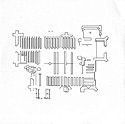 A more cerebral trombone trio is on Meshes (Another Timbre Byways at-b05 www.anothertimbre.com). This CD-R, with its well-designed cover, demonstrates another method of distribution. Certain that young improvisers wouldn’t need the number of discs in a standard official CD run, the British label created its Byways CD-R series. Certainly this gritty and pressured microtonal program from trombonist Mathias Forge, electronics manipulator Phil Julian and cellist David Papapostolou is one justification for the experiment. During two lengthy improvisations, the interaction and texture-blending is such that it’s frequently impossible to match particular timbres to individual instruments. With Julian’s electronics segmenting into chunky signal- processed lines, pulsating reverb and flat-line drones, multiplied shrills flash through the narratives like rain showers, when the static isn’t undulating underneath. Extended passages of extreme stillness also alter the tonal centre so that whistling squeaks from the cello – often hewn from the strings below the bridge – or blurry triplets strained from the trombone bell, tongue pops and flat-line blowing without valve pushes are more conspicuous. Although discontinuous in spots, the combined undulations made up of cello strings held to maximum tautness, rubato grace notes plus tremolo pedal tones from the trombonist, and electronic drones eventually reach a crescendo of inter-connected friction climaxing with a conclusive whistle and pop.
A more cerebral trombone trio is on Meshes (Another Timbre Byways at-b05 www.anothertimbre.com). This CD-R, with its well-designed cover, demonstrates another method of distribution. Certain that young improvisers wouldn’t need the number of discs in a standard official CD run, the British label created its Byways CD-R series. Certainly this gritty and pressured microtonal program from trombonist Mathias Forge, electronics manipulator Phil Julian and cellist David Papapostolou is one justification for the experiment. During two lengthy improvisations, the interaction and texture-blending is such that it’s frequently impossible to match particular timbres to individual instruments. With Julian’s electronics segmenting into chunky signal- processed lines, pulsating reverb and flat-line drones, multiplied shrills flash through the narratives like rain showers, when the static isn’t undulating underneath. Extended passages of extreme stillness also alter the tonal centre so that whistling squeaks from the cello – often hewn from the strings below the bridge – or blurry triplets strained from the trombone bell, tongue pops and flat-line blowing without valve pushes are more conspicuous. Although discontinuous in spots, the combined undulations made up of cello strings held to maximum tautness, rubato grace notes plus tremolo pedal tones from the trombonist, and electronic drones eventually reach a crescendo of inter-connected friction climaxing with a conclusive whistle and pop.
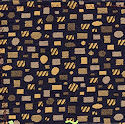 Brass and an electronic variant are also prominent on All Up In There (MrE Records 2 www.myspace.com/gordonallen) by Montreal-based, former Torontonian, trumpeter Gordon Allen, who often plays here. Figuring this concert with Frank Martel on theremin and drummer Michel F. Côté was worth preserving, Allen initially created 79 copies of the disc. With liner notes handwritten on a paper bag and the record packaged in a hand-sewn cloth bag, D-I-Y is taken to its logical extreme. But the strength of the performance suggests that more copies may eventually be needed. Sounds are cohesive and wedded to jazz-improv. Although when all musical cylinders fire at once the results appear as a solid textural block, there’s ample room for individual expression. Revealed are Côté’s anything-but-regular rhythms, the trumpeter’s choked-throat growls, and pitter-pattering string-referencing thumps from the theremin. These bass-like strokes are even more prominent midway through, when joining the drummer’s assertive backbeat, they create a solid base, allowing Allen’s plunger tones, grace note squeaks and bovine lows to float above.
Brass and an electronic variant are also prominent on All Up In There (MrE Records 2 www.myspace.com/gordonallen) by Montreal-based, former Torontonian, trumpeter Gordon Allen, who often plays here. Figuring this concert with Frank Martel on theremin and drummer Michel F. Côté was worth preserving, Allen initially created 79 copies of the disc. With liner notes handwritten on a paper bag and the record packaged in a hand-sewn cloth bag, D-I-Y is taken to its logical extreme. But the strength of the performance suggests that more copies may eventually be needed. Sounds are cohesive and wedded to jazz-improv. Although when all musical cylinders fire at once the results appear as a solid textural block, there’s ample room for individual expression. Revealed are Côté’s anything-but-regular rhythms, the trumpeter’s choked-throat growls, and pitter-pattering string-referencing thumps from the theremin. These bass-like strokes are even more prominent midway through, when joining the drummer’s assertive backbeat, they create a solid base, allowing Allen’s plunger tones, grace note squeaks and bovine lows to float above.
Proving conclusively that quantity does not mean quality, each session uses unexpected means to get to its intended audiences.






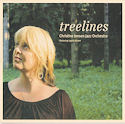 Canada owes Nanaimo, B.C. for raising artists like Diana Krall and the Jensen Sisters for its national jazz team, a thought underscored by Christine Jensen’s newest recording, Treelines - Christine Jensen Jazz Orchestra (Justin Time JTR 8559-2 www.justin-time.com). The leader, known more for her composing than sax playing, has been based in Montreal for some time and here recruits a top-flight 17-piece Quebecois band for her fourth recording as leader and first with orchestra. Within seconds of the opening tune of eight lengthy, thoughtful and stunningly-stylish compositions (Dancing Sunlight) you’re thinking here’s the nation’s answer to America’s vaunted Maria Schneider unit – and when Ingrid Jensen’s dreamy, lyrical trumpet solos starts you might well exclaim “it’s Kenny Wheeler”. In short, this is an astoundingly good album, one that surely will be a 2011 Juno contender, with seven Jensen tracks including four describing B.C. tree types. Charts are often striking, section work is sharp, subtlety abounds in the thick harmonies and there’s acres of room for effective soloing – Joel Miller on soprano sax (Western Yew), Ingrid (Dropoff) and the boss herself on Seafever and by pianist Steve Amirault throughout. Curmudgeons might sneer that there’s excessive sameness to these mini-epics - ignore them.
Canada owes Nanaimo, B.C. for raising artists like Diana Krall and the Jensen Sisters for its national jazz team, a thought underscored by Christine Jensen’s newest recording, Treelines - Christine Jensen Jazz Orchestra (Justin Time JTR 8559-2 www.justin-time.com). The leader, known more for her composing than sax playing, has been based in Montreal for some time and here recruits a top-flight 17-piece Quebecois band for her fourth recording as leader and first with orchestra. Within seconds of the opening tune of eight lengthy, thoughtful and stunningly-stylish compositions (Dancing Sunlight) you’re thinking here’s the nation’s answer to America’s vaunted Maria Schneider unit – and when Ingrid Jensen’s dreamy, lyrical trumpet solos starts you might well exclaim “it’s Kenny Wheeler”. In short, this is an astoundingly good album, one that surely will be a 2011 Juno contender, with seven Jensen tracks including four describing B.C. tree types. Charts are often striking, section work is sharp, subtlety abounds in the thick harmonies and there’s acres of room for effective soloing – Joel Miller on soprano sax (Western Yew), Ingrid (Dropoff) and the boss herself on Seafever and by pianist Steve Amirault throughout. Curmudgeons might sneer that there’s excessive sameness to these mini-epics - ignore them.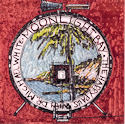 Want to keep the post-Olympic spirit? The latest disc from The Happy Pals who’ve reigned for years at Grossman’s on Spadina every Saturday afternoon, is all you need. Folk are in fine fettle here, band and audience both, enjoying music played over the 6th annual two-day Kid Bastien Forever Kick-Ass Jazz Festival – Bastien, who died in 2003, was chief Pal for more than 30 years. Moonlight Bay (New Orleans North cd-010 www.happypals.ca) has 14 tracks, good old stuff with most of the heavy performance listing falling to Patrick Tevlin’s brash trumpet and esteemed New Orleans guest Michael White’s thrusting clarinet, with big assists coming from trombonist Kid Kotowich and drummer Chuck Clarke. Enthusiastic, erratic vocals are spread around but the jollity index stays high, with upbeat slams on Je Vous Aime, Everybody Loves Saturday Night and Dinah while there’s surprising sophistication in their spin on I’ll Never Smile Again.
Want to keep the post-Olympic spirit? The latest disc from The Happy Pals who’ve reigned for years at Grossman’s on Spadina every Saturday afternoon, is all you need. Folk are in fine fettle here, band and audience both, enjoying music played over the 6th annual two-day Kid Bastien Forever Kick-Ass Jazz Festival – Bastien, who died in 2003, was chief Pal for more than 30 years. Moonlight Bay (New Orleans North cd-010 www.happypals.ca) has 14 tracks, good old stuff with most of the heavy performance listing falling to Patrick Tevlin’s brash trumpet and esteemed New Orleans guest Michael White’s thrusting clarinet, with big assists coming from trombonist Kid Kotowich and drummer Chuck Clarke. Enthusiastic, erratic vocals are spread around but the jollity index stays high, with upbeat slams on Je Vous Aime, Everybody Loves Saturday Night and Dinah while there’s surprising sophistication in their spin on I’ll Never Smile Again.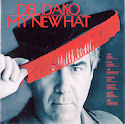 Four things make Del Dako’s My New Hat (www.deldako.com) particularly distinctive: It’s the recording debut as leader of vibesman Dako as opposed to baritone saxist star Dako; the liner notes by Jack Chambers are just about the best I’ve ever read; the determination of Dako to renew his career here is front and centre; and the choice of repertoire is extraordinary – such as the purloining of Beethoven’s 7th Theme from the Seventh Symphony and the two versions of avant pianoman Don Pullen’s Big Alice which suggest Ornette Coleman is on board. Perhaps it’s best just to say this is fascinating jazz with a vibes sheen that underlines the uniqueness of it all. The music’s drawn from two sessions, both with drummer Jeff Halischuk, one with guitarist Reg Schwager, pianist Bernie Senensky and bass Duncan Hopkins, the other with rising star guitarist Nathan Hiltz, bass Tyler Emond and reedman Alex Dean, whose bass clarinet work is terrific.
Four things make Del Dako’s My New Hat (www.deldako.com) particularly distinctive: It’s the recording debut as leader of vibesman Dako as opposed to baritone saxist star Dako; the liner notes by Jack Chambers are just about the best I’ve ever read; the determination of Dako to renew his career here is front and centre; and the choice of repertoire is extraordinary – such as the purloining of Beethoven’s 7th Theme from the Seventh Symphony and the two versions of avant pianoman Don Pullen’s Big Alice which suggest Ornette Coleman is on board. Perhaps it’s best just to say this is fascinating jazz with a vibes sheen that underlines the uniqueness of it all. The music’s drawn from two sessions, both with drummer Jeff Halischuk, one with guitarist Reg Schwager, pianist Bernie Senensky and bass Duncan Hopkins, the other with rising star guitarist Nathan Hiltz, bass Tyler Emond and reedman Alex Dean, whose bass clarinet work is terrific.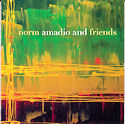 Pianist Norm Amadio has been around for ever, still happily tinkling after more than six decades as a pro and that’s just one reason why he’s so comfortable on Norm Amadio And Friends (Panda Digital ODCD00265 www.pandadigital.com), a classy, stylish treatment of a dozen songs (remarkably, seven of them originals by producer Andrew Melzer). As well as vocalists Marc Jordan and Jackie Richardson, Amadio’s buddies include elegant-as-ever Guido Basso, Phil Dwyer, Reg Schwager, and Rosemary Galloway plus, on three cuts, a string section. The result is top quality jazz, ornamented with unexpected zesty freshness. Catchy newcomers include I Love You That Way, Out Of The Cool and She Smiled. One oddity: Why was it necessary to include three tunes recorded in 1966?
Pianist Norm Amadio has been around for ever, still happily tinkling after more than six decades as a pro and that’s just one reason why he’s so comfortable on Norm Amadio And Friends (Panda Digital ODCD00265 www.pandadigital.com), a classy, stylish treatment of a dozen songs (remarkably, seven of them originals by producer Andrew Melzer). As well as vocalists Marc Jordan and Jackie Richardson, Amadio’s buddies include elegant-as-ever Guido Basso, Phil Dwyer, Reg Schwager, and Rosemary Galloway plus, on three cuts, a string section. The result is top quality jazz, ornamented with unexpected zesty freshness. Catchy newcomers include I Love You That Way, Out Of The Cool and She Smiled. One oddity: Why was it necessary to include three tunes recorded in 1966?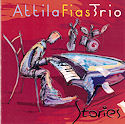 Hungarian-born pianist Attila Fias seems to have done it all during a long musical career - including playing, teaching and organizing all types of music – except make a jazz record though his work is on more than 80 discs. He’s remedied that with Stories (ESPCD-101 www.attilafias.com), 10 original compositions supported by bass Pat Kilbride and drummer Richard Brisco. A graduate of U of T’s jazz program, Fias – who on occasion is as fiery as countryman Robi Botos – hews close to mainstream’s core but he incorporates rich, rolling rhythms, elements of rock, country, classical and ethnic genres and sometimes dips craftily into free jazz. The intricate Growth Cycle threesome is the best of a bright lot.
Hungarian-born pianist Attila Fias seems to have done it all during a long musical career - including playing, teaching and organizing all types of music – except make a jazz record though his work is on more than 80 discs. He’s remedied that with Stories (ESPCD-101 www.attilafias.com), 10 original compositions supported by bass Pat Kilbride and drummer Richard Brisco. A graduate of U of T’s jazz program, Fias – who on occasion is as fiery as countryman Robi Botos – hews close to mainstream’s core but he incorporates rich, rolling rhythms, elements of rock, country, classical and ethnic genres and sometimes dips craftily into free jazz. The intricate Growth Cycle threesome is the best of a bright lot.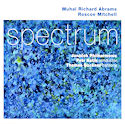 Spectrum
Spectrum 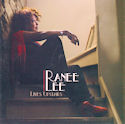 Ranee Lee Lives Upstairs
Ranee Lee Lives Upstairs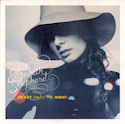
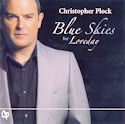 Blue Skies for Loveday
Blue Skies for Loveday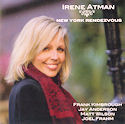 New York Rendezvous
New York Rendezvous 